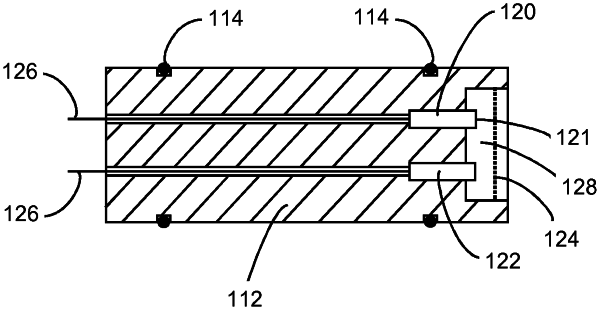| CPC G01N 27/28 (2013.01) [E21B 47/00 (2013.01); G01N 27/302 (2013.01); G01N 27/308 (2013.01); G01N 27/48 (2013.01); G01N 33/1886 (2013.01)] | 18 Claims |

|
1. An electrochemical sensor for an analyte, the electrochemical sensor comprising:
a reference electrode comprising a first redox active compound and a working electrode comprising a second redox active compound, wherein the first redox active compound and the second redox active compound differ in sensitivity to a concentration of the analyte;
an aqueous electrolyte; and
a control unit including one or more components that apply an electrical potential to the working electrode and measure one or more of voltage or current;
wherein the first redox active compound:
comprises a ferrocenophane with at least one bridging group comprising a chain of atoms covalently attached to and connecting two cyclopentadiene rings associated with a single iron atom, wherein the chain of atoms in the bridging group is a continuous chain of at least three carbon atoms between the two cyclopentadiene rings of the ferrocenophane, and wherein a first cyclopentadiene ring of the two cyclopentadiene rings is coupled to a benzyl group via an alkoxy;
is thermally stable at an elevated temperature of about 120° C.; and
is dissolved in the aqueous electrolyte.
|